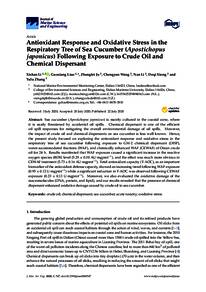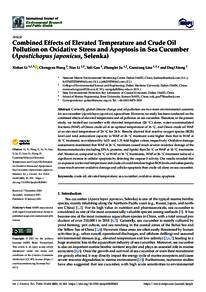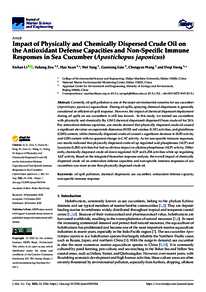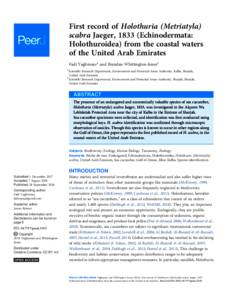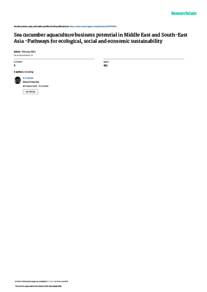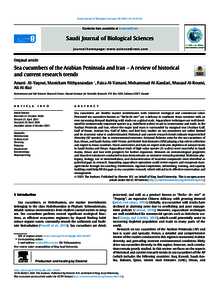Document
Antioxidant response and oxidative stress in the respiratory tree of sea cucumber (apostichopus japonicus) following exposure to crude oil and chemical dispersant.
Identifier
DOI: 10.3390/JMSE8080547
Source
Journal of Marine Science and Engineering. v. 8, 8, 547
Contributors
Liao, Guoxiang., Author
Ju, Zhonglei., Author
Wang, Chengyan., Author
Li, Nan., Author
Xiong, Deqi., Author
Zhang, Yulu., Author
Country
Switzerland
City
Basel
Publisher
MDPI AG.
Gregorian
2020-08-01
Language
English
English abstract
Sea cucumber (Apostichopus japonicus) is mainly cultured in the coastal zone, where it is easily threatened by accidental oil spills. Chemical dispersant is one of the efficient oil spill responses for mitigating the overall environmental damage of oil spills. However, the impact of crude oil and chemical dispersants on sea cucumber is less well known. Hence, the present study focused on exploring the antioxidant response and oxidative stress in the respiratory tree of sea cucumber following exposure to GM-2 chemical dispersant (DISP), water-accommodated fractions (WAF), and chemically enhanced WAF (CEWAF) of Oman crude oil for 24 h. Results manifested that WAF exposure caused a significant increase in the reactive oxygen species (ROS) level (5.29 0.30 AUmgprot-1), and the effect was much more obvious in CEWAF treatment (5.73 ± 0.16 AUmgprot-1). Total antioxidant capacity (T-AOC), as an important biomarker of the antioxidant defense capacity, showed an increasing trend followingWAF exposure (0.95 ± 0.12 Umgprot-1) while a significant reduction in T-AOC was observed following CEWAF exposure (0.23 ± 0.13 Umgprot-1). Moreover, we also evaluated the oxidative damage of the macromolecules (DNA, protein, and lipid), and our results revealed that the presence of chemical dispersant enhanced oxidative damage caused by crude oil to sea cucumber.
ISSN
2077-1312
Resource URL
Category
Journal articles

